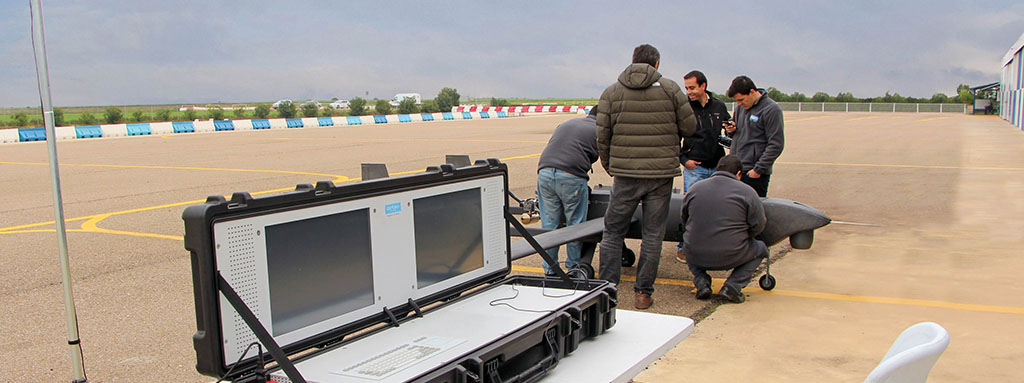We have previously addressed the challenges involved in the different stages of the life cycle of RPAS, more specifically those concerning the design and manufacturing phases. Now we will conclude by looking into the most relevant aspects involved in their operations as seen from our point of view.
It is necessary start off by assuming that flying RPAS is considered an exceptional aerial activity and therefore:
- It should be explicitly authorised.
- The operator is responsible for the aircraft and his/her actions and should therefore be covered by a third-party liability policy.
- The platform should be properly identified while it flies: registration number, serial number and operating company.
- And operations should only be allowed within the authorised flight envelope.
The main challenge that is yet to be overcome is the safe integration of RPAS in complex operations working in conjunction with other systems.
Several precautions based on this exceptionality should therefore be taken when operating an RPAS. Having all the documentation in order is essential, as is keeping in contact with the competent authority, which will provide the necessary support should any doubts arise regarding the operating constraints set forth by the law.
Before launching the operation, it is fundamental to run a comprehensive series of pre-flight checks to ensure all the systems are running properly on the ground. An incident detected in time on the ground can pre-empt many problems later.
The control and guidance system governing the platform’s navigation should be very robust, prepared to handle the maximum number of different failure situations and conduct the mitigation actions required in each eventuality. Moreover, it is essential for the remote pilot operating the platform to be an expert and he/she should have received the proper training for the relevant qualification. In some comprising situations which could come about during the operation, the pilot’s expertise can be essential to safeguard the platform’s safety, as well as that of other material assets and of course people.
There are quite a few applications that justify the use of RPAS in civil operations like, for instance:
- Environmental monitoring tasks, such as conducting accurate forestry or agricultural inventories (water resource and fertiliser optimisation, identifying and combatting pests, improving the crops’ quality and production). One of the main challenges in this regard resides in the possibility of improving the electric engines’ efficiency to allow large tracts of land to be covered while leaving the smallest possible trace in the surroundings.
- Topographic works for mining and civil works. Thanks to the use of high-resolution COTS cameras, in-flight accuracy and image post-processing techniques through stereoscopic triangulation, surveys and orthophotos of the terrain can be made without the need for having costly equipment and services like manned LDAR (Laser Imaging Detection and Ranging) flights or large-format photographic cameras.
- The automation of cartographic information (for instance, for cadastral services) and identification and documentation of cultural heritage elements.
- Or real-time air pollution assessments related to the current smart cities concept under controlled situations (city centres) or in emergencies (fires, nuclear disasters, etc.).
Added to the technical difficulties set out for the civil scenarios set out above, RPAS operations need to be much more accurate in the defence area, since the margin of error is practically nil for obvious reasons. In this context of use, operations are normally integrated with ground-based equipment or with manned or unmanned aerial resources, which makes the scenario even more complex.
These then are just a few examples of the hundreds of applications we can all conjure up in which the use of RPAS can efficiently help to improve actions that are implemented today with other means. There is no doubt, however, that the main challenge that is yet to be overcome is the safe integration of RPAS in complex operations working in conjunction with other systems.



